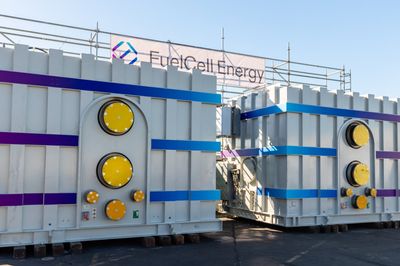
The pilot project is a cornerstone of an extended agreement between ExxonMobil Technology and Engineering and Danbury, Connecticut-based clean energy company FuelCell Energy. Photo via exxonmobil.be
The Esso fuel business of Spring-based ExxonMobil is forging ahead with a pilot project at its Dutch refinery in Rotterdam to test technology aimed at reducing carbon emissions and simultaneously generating electricity and hydrogen.
The pilot project is a cornerstone of an extended agreement between ExxonMobil Technology and Engineering and Danbury, Connecticut-based clean energy company FuelCell Energy. The deal is now set to expire at the end of 2026.
ExxonMobil and FuelCell announced the pilot project in 2023.
“The unique advantage of this technology is that it not only captures CO2 but also produces low-carbon power, heat, and hydrogen as co-products,” Geoff Richardson, senior vice president of ExxonMobil Low Carbon Solutions, said last year.
The Rotterdam facility, which opened in 1960, will be the first location in the world to test the technology. The technology eventually could be rolled out at additional ExxonMobil sites.
The European Union is among the funders of the pilot project. FuelCell is making carbonate fuel cells for the project at its manufacturing plant in Torrington, Connecticut.
The extended agreement enables FuelCell to incorporate elements of the jointly developed technology into carbon capture products currently being marketed to customers. ExxonMobil and FuelCell are working on formalizing an arrangement for selling the new technology.
“The technology, which captures carbon while simultaneously generating electricity and hydrogen, could improve the economics of carbon capture and could potentially lower the barrier to broader adoption of carbon capture in the marketplace,” according to a FuelCell news release.
FuelCell says its 10-year partnership with ExxonMobil has focused on developing technology that reduces carbon emissions from emission-intensive sectors while generating electricity and hydrogen in the process — “something that no other fuel cell technology or conventional absorption systems can do.”